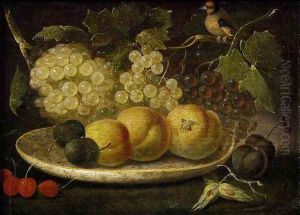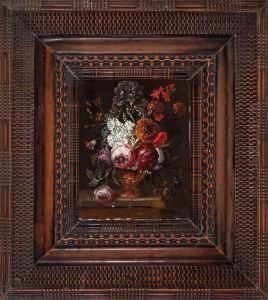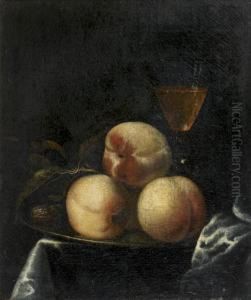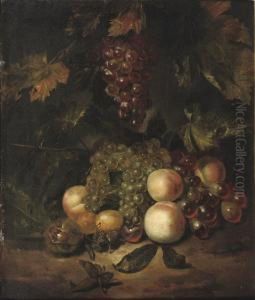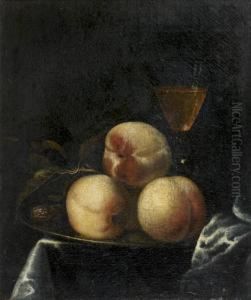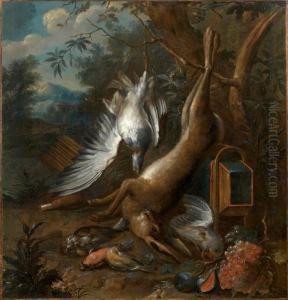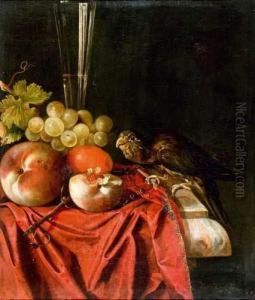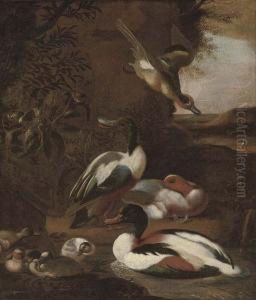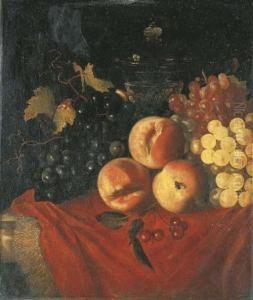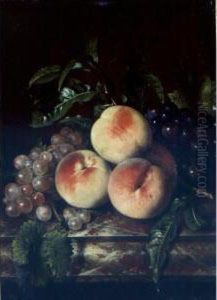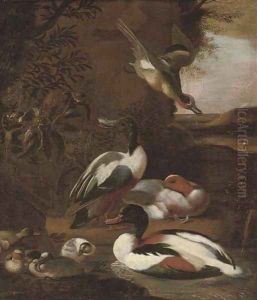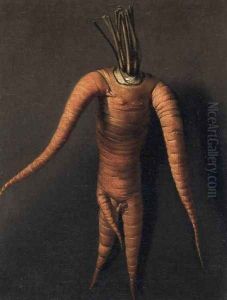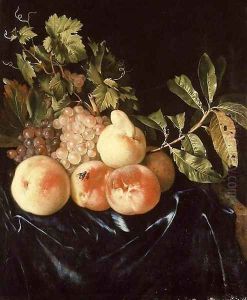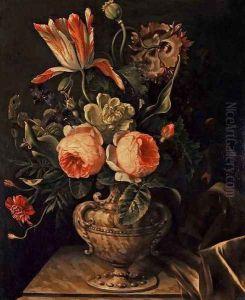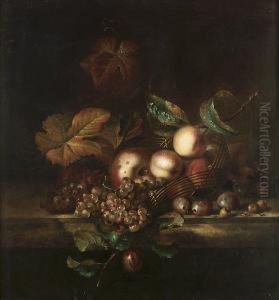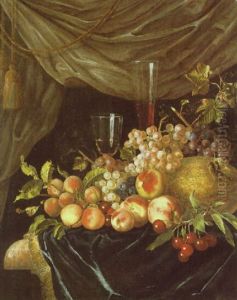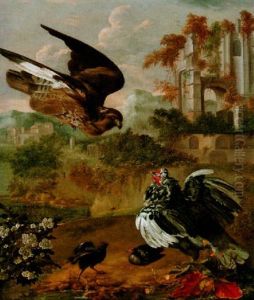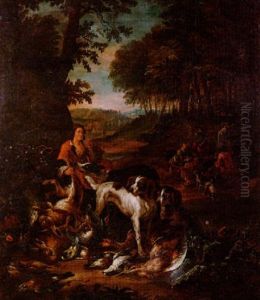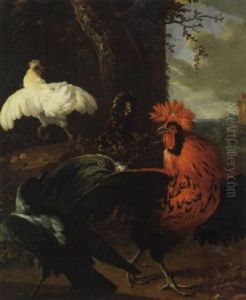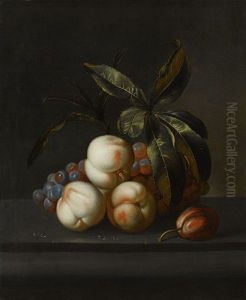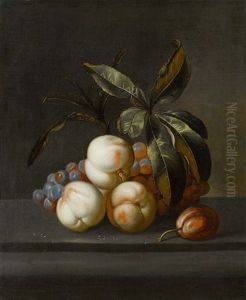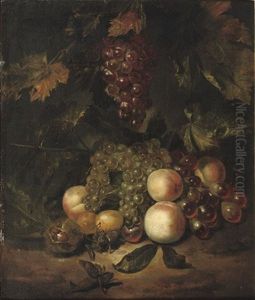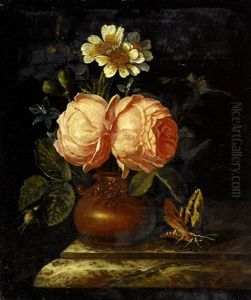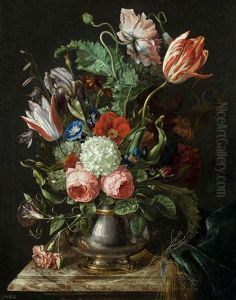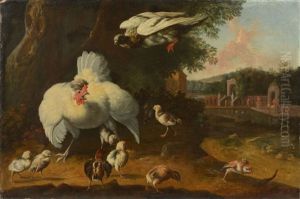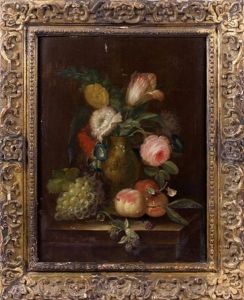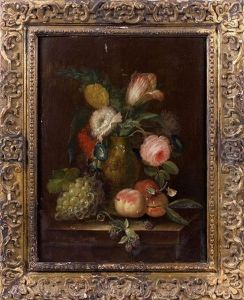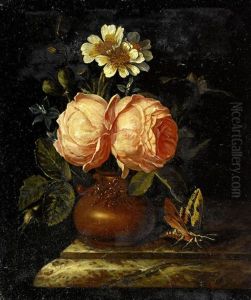Willem Frederik van Royen Paintings
Willem Frederik van Royen, born in 1645 in The Hague, Netherlands, was a prominent Dutch Golden Age painter known for his exquisite still lifes and bird paintings. He lived during a period when Dutch art was flourishing, and his works are exemplary of the era's attention to detail, color, and composition. Van Royen's artistic journey began in his hometown, but he also spent significant time in Germany, where he was influenced by the works of other Dutch artists and the Germanic tradition of painting.
Van Royen's mastery in depicting birds in their natural environment and his skillful still life compositions were highly admired by his contemporaries. His paintings often featured a combination of flowers, fruits, and birds, arranged in a manner that was both aesthetically pleasing and naturalistic. This was a time when the study of nature and its elements was gaining popularity, and van Royen's works resonated well with the scientific curiosity of the age.
Despite his talent and the quality of his work, Willem Frederik van Royen is not as well-known as some of his contemporaries. This may be partly due to the sheer number of artists working during the Dutch Golden Age, many of whom were exceptional, making the period one of the most significant in the history of Western art. However, for those who study Dutch still life and animal painting, van Royen remains an important figure.
His works are held in various collections around the world, showcasing the enduring appeal of his detailed and delicate compositions. Van Royen's contribution to the Dutch Golden Age of painting, particularly in the niche of bird and still life painting, continues to be appreciated by art historians and collectors alike.
Willem Frederik van Royen passed away in 1723, leaving behind a legacy that, while perhaps not as widely recognized as some of his peers, is deeply valued for its contribution to the development of still life and naturalistic painting in the Netherlands.
